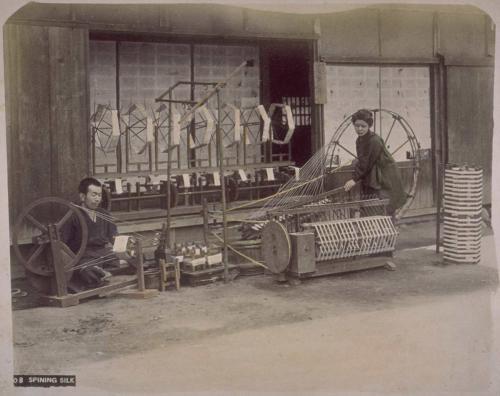
Although China had long been the top exporter of raw silk and silk products to the West, by the late nineteenth century Japan emerged as a serious competitor for dominance in the global silk market. Partly because Japan had a long history of absorbing cultural and technological influences from abroad, namely China, the Japanese silk industry was better equipped to adapt to change, including embracing new technologies and systems of production. China’s more conservative imperial government was slower to seize the opportunity and direct their markets towards the West, rather than domestically. This photograph shows how a traditional Japanese skill, silk spinning, began to transform into a manufacturing industry during the Meiji period (1868-1912).
Image via Nineteenth Century Collections Online